Leonardo Da Vinci Origami Helicopter Template
Leonardo Da Vinci
Leonardo Da Vinci is probably best known as the famous artist who painted the 'Mona Lisa', which has hung in the Louvre gallery in Paris for over 200 years.
However he wasn't just a great painter. Da Vinci was also a sculptor, an architect, a poet, a composer, a scientist, a mathematician and an inventor. Wow! It's hard to believe that one man could possibly have that many talents.
Leonardo Da Vinci was a genius and perhaps one of the most remarkable men that has ever lived.
Top 10 facts
- Leonardo Da Vinci was born near Florence in Italy in 1452.
- Leonardo's parents were not married. His father, Ser Piero, was a wealthy Florentine lawyer and his mother, Caterina, was a young peasant girl. He spent his early years with his mother but then lived in the household of his father, grandparents and uncle. His father went on to marry four times!
- Da Vinci was a huge animal lover. He even chose to be a vegetarian, something that was very unusual in those days. He was said to buy animals from the market just so he could set them free from their cages!
- Leonardo was left handed. But as well as using his left hand to write, he wrote back to front, from right to left across the page which meant that, for many years, people were unable to understand his notes. This kind of 'mirror writing' led people to believe that Da Vinci wanted to keep his ideas secret!
- Leonardo obviously had an amazing mind but believe it or not he never went to school! Instead he was taught reading, writing and maths at home.
- The Mona Lisa is a portrait of the wife of a Florentine official. Apparently he ordered music to be played at every sitting so the lady's smile would remain! Little did Da Vinci know that this was to become arguably the world's most famous painting!
- One of today's most successful figures, Bill Gates, the man behind Microsoft computers, was obviously inspired by Leonardo's mind. He paid a cool 30.8 million dollars for a 500-year-old manuscript written by Da Vinci.
- Leonardo's surname Da Vinci simply means 'of Vinci', a Tuscan village not far from Florence, which is where his father's family took their name.
- There are actually two versions of Da Vinci's famous painting The Virgin of the Rocks. The first, which he began painting in 1478, hangs in the Louvre. He later painted another version which is in London's National Gallery.
- Leonardo was tall, at least 5 ft 8, athletic and handsome! As he grew older he wore his hair long, grew a beard down to his chest and wore brightly-coloured clothes, which was very different to other men of his time.
Timeline
-
Leonardo Da Vinci is born near the village of Vinci in Italy.
-
Leonardo becomes apprentice to Vercocchio.
-
Leonardo's work is loved so much that he is asked to join the Painters' Guild of Florence.
-
The plague kills thousands in Milan.
-
Leonardo begins work on his great painting The Last Supper.
-
The French capture Milan.
-
Leonardo returns to Florence to become architect and chief engineer to Duke Cesare Borgia.
-
Da Vinci begins to paint the Mona Lisa.
-
Leonardo returns to Milan to work for the French governor there.
-
The French are forced out of Milan and Leonardo moves too, heading for Rome.
-
Francois I becomes King of France.
-
Francois asks Da Vinci to come and paint for him so he moves to France, where he stays for the rest of his life.
-
Leonardo Da Vinci dies and is buried in France.
-
During the French Revolution, troops destroy the church and grounds where Da Vinci was buried.
Did you know?
- Leonardo Da Vinci never married or had children (which is probably why he had so much time to dedicate to his incredible drawings, ideas and inventions!).
- He apparently could draw with one hand and write with the other – imagine how useful that would be at school!
- Da Vinci was the brains behind the bicycle, the aeroplane, the helicopter and the parachute – amazingly he drew designs for all these machines about 500 years before their time!
- Leonardo is commonly known as the 'Renaissance man'. Renaissance is actually a french word meaning 'rebirth' and it describes the time in history which began in Italy in the 14th century when there was lots of excitement about art, science and architecture.
- Unlike many well known artists, Da Vinci was actually famous for his paintings when he was alive but it was only much much later that people realised that he was such a talented scientist and inventor too.
- The Mona Lisa was stolen from the Louvre in 1911 by a former employee who felt the painting belonged in Italy. He actually walked out of the gallery with the painting under his clothes and it was two years before the painting was returned safely!
- The Mona Lisa was one of Da Vinci's favourite paintings and he apparently carried it with him until he died.
- By studying the human body in so much detail, Leonardo became rather an expert in anatomy (how the body is made up). The Vitruvian man is Da Vinci's famous pencil drawing of a man with ideal human proportions and it's reproduced on Italy's 1 euro coin.
See if you can find the following in the gallery below:
- A statue of Leonardo
- Da Vinci's most famous painting, the Mona Lisa
- Portrait of Ginevra Benci
- Da Vinci's Vitruvian man
- The Last Supper
- A statue of Da Vinci outside the Uffizi Gallery, Florence
- The Louvre in Paris
- Florence, where Da Vinci was born
- A statue of Leonardo in Florence
- A bust portrait of Da Vinci
Gallery
About
Leonardo Da Vinci was undoubtedly ahead of his time, with incredibly forward-thinking ideas and discoveries.
As a young boy, Leonardo enjoyed drawing and music. His father must have thought his son talented because he showed his drawings to an artist named Andrea del Verrocchio, who immediately recognised that Da Vinci should be trained as an artist.
Leonardo showed a great interest in the world around him. He was inspired by people and nature and used what he saw to create his wealth of ideas. He studied the human body in great depth, in fact in more detail than the doctors of his time! And he was already working on the idea of flight. Can you believe he actually designed the bicycle, the aeroplane, the helicopter and the parachute?
Leonardo wasn't just interested in what things looked like – he wanted to know how things worked too. As well as being determined to draw things exactly as they looked, he was fascinated by how the human eye worked, how plants grew and how birds flew.
In about 1478, Leonardo set up his own studio and was asked by the church to create a big altarpiece, the Adoration of the Magi. He never finished this painting as he was offered a job by the Duke of Milan as court artist and he accepted. In Milan he not only created famous paintings such as Virgin of the Rocks and The Last Supper but turned his hand to theatre design, too, and created some marvellous machinery.
It was while he painted The Last Supper that Da Vinci experimented with new oil-based paints. But the paint didn't stick well to the walls and began to flake off. What is left of the famous painting now is largely a reconstruction.
When Leonardo returned to Florence in 1500, he returned as a very well-known and respected man. It was during this time that he painted the Mona Lisa.
After this Da Vinci produced no new paintings and spent most of his time filling his notebooks with scientific drawings and ideas. He was interested in firearms, the action of water, the human body and how it worked, how birds could fly and how plants grew and his amazing ideas and drawings continue to inspire us today.
Da Vinci spent his final years in France, having been invited by King Francis I who not only gave him a house but the title of first painter, architect and mechanic to the King!
Leonardo suffered a lot of sickness in the later years of his life and his right hand was partially paralysed due to a stroke. He had hoped to organise all his drawings, notebooks and ideas before he died but he never managed to achieve his goal and it was many, many years before all his incredible notebooks were properly discovered and the extent of his genius realised.
Leonardo died on May 2, 1519 at Clos Luce in France where he had spent the last few years of his life, just a few weeks after his 67th birthday.
Related Videos
Just for fun...
- Leonardo Da Vinci has left a coded message – use the key to see if you can crack it!
- Find out about the human heart's anatomy using Leonardo's drawings in an interactive game
- Hear the Mona Lisa sing her story in a Horrible Histories song
- Colour in Da Vinci's famous Mona Lisa
- Which of Leonardo's flying machines will fly like a bird or sink like a stone? Find out in this online game
- Leonardo da Vinci produced the first anatomy drawings of human muscle and bones; make his skeleton drawings dance by answering quiz questions
- Find out about what went on inside the head of "the most curious man who ever lived" in an interactive game
- Explore Leonardo da Vinci's studio and find 12 objects in it
- Play a game to understand the grid structure and rules Leonardo used to help him when drawing heads and faces
- Be inspired by Leonardo to create your own flying machine
- Make your own Leonardo da Vinci paper glider
- Try some Leonardo-inspired activities: mirror writing, drawings with perfect linear perspective, inventing gadgets and more
- Download Leonardo Da Vinci activity sheets and worksheets to help you learn how to draw like Leonardo
Children's books about Leonardo Da Vinci
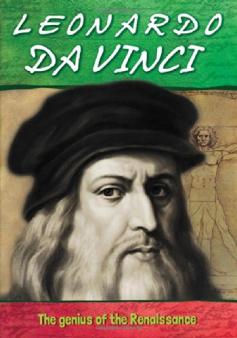
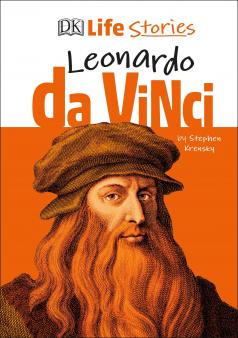
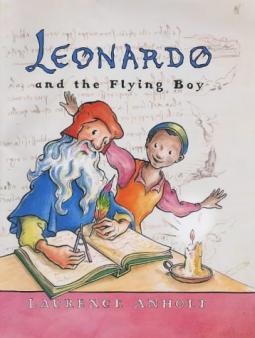
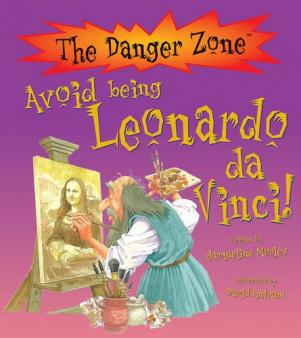
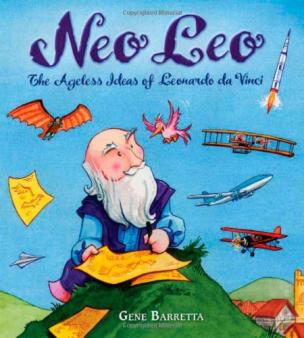

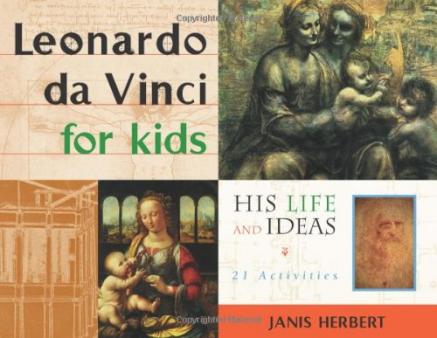
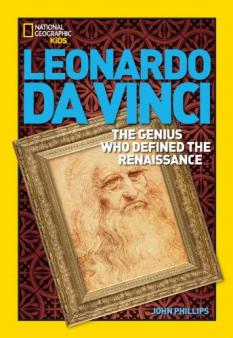
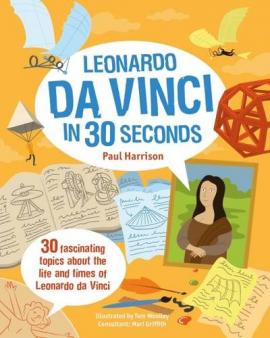
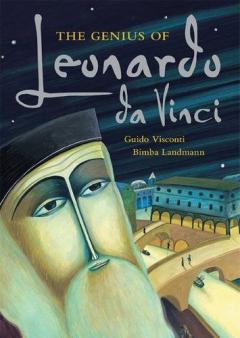
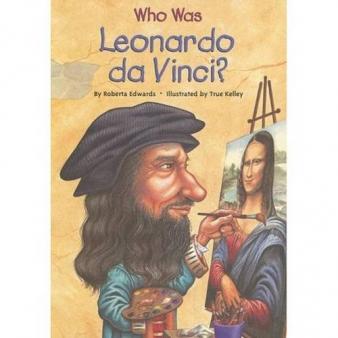
Find out more
- Listen to (an actor playing) Leonardo talk about his passion for drawing and his ideas for flying machines!
- Read the Kiddle Encyclopaedia entry about Leonardo Da Vinci
- Look at Leonardo's anatomical drawings, including his pictures of babies
- Find out more about this amazing artist, inventor and scientist in Boston's Museum of Science Leonardo micro-site
- See the notebooks where Leonardo drew his designs for the aeroplane, the helicopter, the parachute, the submarine and the car. You can even "turn the pages" of Leonardo's notebook online yourself!
- 150 models of Leonardo's inventions are exhibited in Italy, but you can see them online too
- Look at some of Leonardo's drawings
- Watch a video lesson about Leonardo and his life and work
- Discover the amazing work of Da Vinci with Dick and Dom
- Details of Leonardo's most famous paintings, including the Mona Lisa and The Last Supper
- Join historian Greg Jenner for a BBC Sounds kids' homeschool history lesson about Leonardo Da Vinci
- Watch a slideshow of 17 of Leonardo's paintings
- See the Mona Lisa up close in a virtual look tour of the painting
- Watch an animation about the theft of the Mona Lisa in 1911
- Find out more about some of Leonardo's amazing inventions: driverless vehicles, human-like robots and even a primitive computer
- Short films about Leonardo the polymath and his drawings
Leonardo Da Vinci: famous quotes
- 'Iron rusts from disuse; stagnant water loses its purity and in cold weather becomes frozen; even so does inaction sap the vigour of the mind."
- "Human subtlety... will never devise an invention more beautiful, more simple or more direct than does Nature, because in her inventions nothing is lacking, and nothing is superfluous."
- "Every man at three years old is half his height."
See for yourself
- Visit London's National Gallery to see Da Vinci's impressive The Virgin of the Rocks (the second version he painted) or look at images of it on the museum's website
- Be inspired by Da Vinci's notebooks, five of which are displayed in London's V&A Museum.
- If you ever take a trip to Paris, you can see the Mona Lisa hung in the Louvre gallery – Da Vinci's and arguably one of the world's most famous paintings.
- A full length statue of Da Vinci stands outside the Uffizi Gallery in Florence, Italy and there is a room inside dedicated to some of his early work.
- There is a museum dedicated to Leonardo Da Vinci in Milan, Italy
Also see
Leonardo Da Vinci Origami Helicopter Template
Source: https://www.theschoolrun.com/homework-help/leonardo-da-vinci
0 Response to "Leonardo Da Vinci Origami Helicopter Template"
Post a Comment